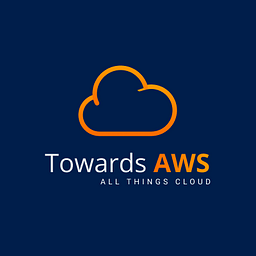Introduction: Hey there, tech enthusiasts! 🙌 Are you ready to embark on a thrilling journey into the world of event-driven architecture (EDA)? If you're part of an organization heavily invested in AWS and seeking to revolutionize your data processing capabilities, you've come to the right place! In this blog post, we'll dive deep into the realm of EDA, exploring the best solutions AWS has to offer. Get ready to discover how you can supercharge your system's scalability, streamline integration with services like Databricks, and unlock the full potential of real-time data processing. Let's get started! 🚀
The Quest for the Ultimate EDA Solution: Picture this: you're on a mission to find the perfect EDA solution for your organization. You've got a checklist of requirements that would make even the most seasoned architect break a sweat. 😅 From configurable event routing and deep filtering capabilities to event retry and retention support, you need a solution that can handle it all. But wait, there's more! You also need event storage for playback, guaranteed event ordering, topic/partition support, and seamless integration with external services like Databricks. Oh, and let's not forget about maintainability, scalability, and ease of use. Phew! 😮💨
Fear not, my friend! AWS has got your back with a range of powerful options. Let's take a closer look at the contenders:
🥊 In the blue corner, we have Amazon EventBridge. With its serverless model and seamless integration with the AWS ecosystem, EventBridge packs a punch when it comes to operational simplicity. However, it falls short in terms of event storage for playback and inherent event ordering.
🥊 In the red corner, we have Apache Kafka and its managed variants, MSK and MSK Serverless. Kafka is a heavyweight champion in the world of event streaming, boasting extensive capabilities for event processing, strong guarantees on event ordering, and data retention. But be warned, it comes with a steep learning curve and requires significant DevOps resources to tame.
🥊 And in the green corner, we have Confluent Cloud, a fully managed Kafka service that offers the power of Kafka without the operational overhead. It's like having a personal trainer for your Kafka clusters! 💪 However, cost considerations and potential vendor lock-in are factors to keep in mind.
Case Study: XYZ Corporation's EDA Transformation Let me tell you a story about XYZ Corporation, a company that was drowning in data and struggling to keep up with the demands of real-time processing. They knew they needed an EDA solution, but the options seemed overwhelming. 😵
That's when they discovered Amazon Kinesis (On-demand Mode). It was like finding the perfect piece to complete their AWS puzzle! 🧩 Kinesis offered a balanced approach with its managed service model, seamless AWS integration, and capabilities that aligned perfectly with XYZ Corporation's requirements.
With Kinesis, they were able to: ✅ Streamline data streaming and processing ✅ Seamlessly integrate with AWS Lambda for scalability ✅ Effortlessly connect with Databricks for powerful analytics
The implementation journey was a breeze! They started with a prototype deployment in their CRM Implementation - Service Layer project, allowing them to validate Kinesis's effectiveness in handling event processing, routing, and filtering. The results were mind-blowing! 🤯
XYZ Corporation conducted thorough integration testing with Databricks, ensuring a seamless data flow and unlocking advanced analytics capabilities. They leveraged AWS Lambda for processing scalability, monitored costs closely, and implemented comprehensive monitoring with CloudWatch and DataDog. It was like having a superhero team watching over their EDA solution! 🦸♀️🦸♂️
The Verdict: Amazon Kinesis Reigns Supreme! 👑 After careful consideration and analysis, the verdict is in: Amazon Kinesis (On-demand Mode) emerges as the champion for XYZ Corporation's EDA needs. It strikes the perfect balance between operational simplicity, scalability, AWS ecosystem integration, and the ability to meet their specific functional requirements.
But wait, there's more! 🎉 The appendices section of this blog post is a treasure trove of additional insights. These architectural considerations will help you optimize your EDA solution and unlock even more possibilities! 💡
Conclusion and Call-to-Action: Phew, what a journey! We've explored the world of EDA, battled through the options, and emerged victorious with Amazon Kinesis as the recommended solution for organizations heavily invested in AWS. 🏆
But the adventure doesn't stop here! It's time for you to take action and embark on your own EDA transformation. Start by assessing your organization's requirements, dive deep into the capabilities of Amazon Kinesis, and unlock the power of real-time data processing. 💪
Remember, the key to success lies in thorough planning, testing, and continuous improvement. Don't be afraid to experiment, iterate, and push the boundaries of what's possible with AWS and Kinesis. 🚀
If you have any questions, need further guidance, or want to share your own EDA success stories, drop a comment below! Let's keep the conversation going and empower each other in this thrilling world of event-driven architecture. 💬
Happy architecting, everyone! 🎉👩💻👨💻
Appendices:
 How to Optimize AWS Lambda & Kinesis to process 5 million records
How to Optimize AWS Lambda & Kinesis to process 5 million records
 Resolving Bottlenecks of Lambda Triggered By Kinesis — Part 1: Data Stream Capacity
Resolving Bottlenecks of Lambda Triggered By Kinesis — Part 1: Data Stream Capacity
 Resolving Bottlenecks of Lambda Triggered By Kinesis — Part 2: Lambda Compute
Resolving Bottlenecks of Lambda Triggered By Kinesis — Part 2: Lambda Compute
 Delta Live Tables with AWS Kinesis
Delta Live Tables with AWS Kinesis
Getting started using MSK Serverless clusters - Amazon Managed Streaming for Apache Kafka
Step 3: Create client machine and Apache Kafka topic - Amazon Managed Streaming for Apache Kafka
.png)
